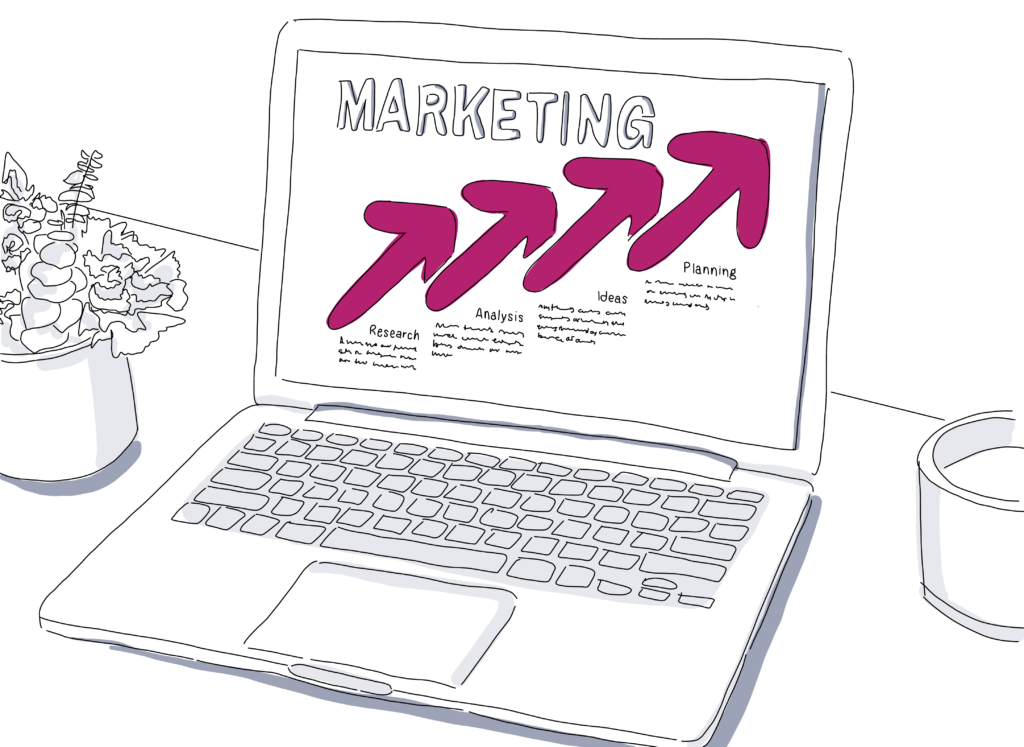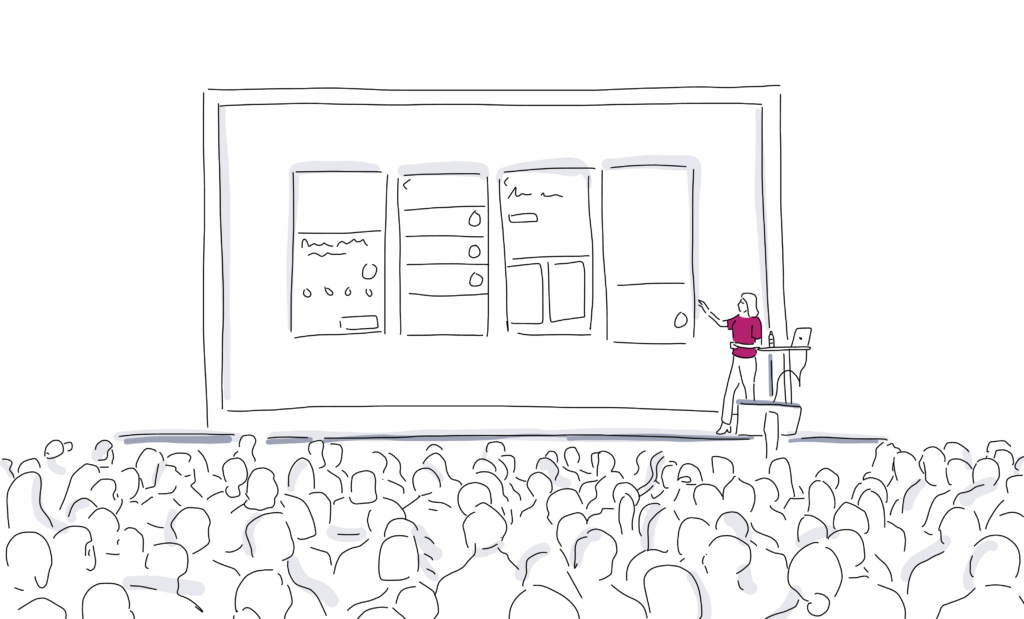
How to Define Event Goals and Objectives That Make an Impact
Before you start planning any kind of event, the first thing to do is define your event goals and objectives. Many planners dive right into planning without even considering this crucial bit of information.
Don’t make this mistake! Setting event goals and objectives will actually make planning your event much easier.
We’ll start with the steps to setting goals for an event, and then we’ll give you a few examples of great event goals for a bit of inspiration.
In this post:
- Five Steps to Set Event Objectives
- Four Event Objective Examples
- Event Objective Impact
- Five Things to Keep In Mind When Building Your Event Planning Strategy
What Are Event Goals and Objectives?
The terms “goals” and “objectives” are often used interchangeably. However, they each have distinct meanings:
- Goals are usually specific and measurable.
- Objectives are the strategies and steps that you use to reach your goals.
Use these 5 Steps to Set Event Goals to Maximize the Event’s Impact:

Step 1: Identify the event goals
When determining the goals behind the event, you are simply documenting the purpose of the event. Why is the event taking place?
Here are some key questions to consider when you are setting and defining event goals and objectives:
- Why are you having this event?
- Why are you inviting attendees to your event?
- What are the key things you want an attendee to walk away with?
- How will you specifically measure your success?
Keep the big picture in mind
The right event goals should align with the brand’s overall marketing as well as the company’s mission statement. For event planners, remembering the big picture can be really helpful since their minds are normally focused on a million little tasks and deadlines.
Define key performance goals
Understanding the “why” is important ” but you also need to quantify your goal.
When working with performance goals, focus on what you can control. For example, you can’t really control how many of your attendees choose to return for next year’s conference. But you can assess the number of sales made before, during, and after the conference. And how many qualified leads you obtained. And how many of those leads your team followed up with in the months after. The list can go on and on.
It may seem obvious, but when decision-makers look to measure the success of the event, they may suggest things that are simply out of your control. That’s why the way you phrase your goals can be so important when communicating expectations to your higher-ups.
Step 2: Make your event goals “smart”
When setting goals, work with SMART goals, which are:
- Specific
- Measurable
- Attainable
- Realistic
- Time-based
For instance, saying you want to “host the best marketing conference ever” is not very specific or measurable. A goal to “plan a week-long country music festival by the end of the month” is time-based and specific, but it’s probably not attainable or realistic.
It’s great to reach for the stars when setting your goals, but think realistically of what you can actually achieve. Write down lots of ideas for the goal first. Then, narrow the list and combine the ideas to come up with one solid goal.
If you’re not sure what these “smart” goals should look out, check out the examples later in this post.

[Tweet “Setting event goals and objectives will actually make planning your event much easier.”]
Step 3: Measure your event goals with 20 measurable event KPIs to use
Regardless of your objective, one or more of these main event KPIs should be a great fit for your needs:
- Cost per customer acquisition
- Total number of qualified leads acquired at the event
- Sponsors highly rank their satisfaction with the event
- Individual promo code tracking link performance
- Gross revenue
- Total number of registrations
- Social media mentions using designated event hashtag on each platform
- The majority of attendees polling highly satisfied with event speakers
- Number of total active community members after event (compared to total number before the event)
- Numerical results from attendee satisfaction surveys
- Number of total event check-ins compared to registrations as a percentage
- Net Promoter Score
- Event community engagement online as measured by social media interactions OR specified activity on event app
- Live event app polling
- Social media posts, likes, and shares pertaining to the event
- Ticket sales and individual ticket type performance
- Cost to revenue ratio
- Individual sponsor page engagement on the event website
- Number of repeat attendees (for recurring events)
- Total new customers acquired
Event software is especially helpful for measuring these KPIs, so make sure you have a reliable platform ready to go ahead of time with all the features needed to capture your chosen data.

Step 4: Develop an event strategy
The next step is thinking through your event strategy. Once you know your event goal ” and you’re confident and passionate about those goals ” it’s time to figure out how you’re going to reach them.
When thinking strategy, think of it from two perspectives:
- From the perspective of you, the planner
- From the perspective of your attendee
How will both the planning team and the attendee help realize the goals? Start to ask yourself questions such as:
- What educational measures (i.e. speakers, panelists) do you need to put in place to accomplish this goal?
- Will you need speakers or any educational content to reach your goal?
- If it’s a social event, what is your social goal for your attendees and how will you encourage this interaction?
- What entertainment is needed to reach the social satisfaction you require for this event?
You may find that your strategy might involve some mini-goals. Mini-goals and milestones are what you might need to set to get your ultimate goal ” that is OK.
As you brainstorm, map out your event plan. This plan can be an outline, a project plan, or another document. It should highlight the goal you set and detail the actions you’ll take to reach those goals.
Step 5: Ensure your event goal helps people make connections
No two events are exactly the same, but all focus on creating connections in one way or another. Maybe attendees connect with each other, with content, or with an idea.
You need to think about how to create those connections. For instance, if the goal of the event is to teach attendees, you need to think about what attendees are learning, why they’re learning it, and how you want to teach them.
With these answers, you can start to build out the essential items like speakers and content.
Finally, make sure that your goals are transparent to your attendees so that they are assisting you with accomplishing your vision along the way.
Now, Discover 4 Smart Event Objectives Examples
Real-world examples can help you see what’s possible. A few notes about these examples:
- Most published case studies showcase outstanding events. They’re probably not the norm. When setting goals, it’s best to assume that you’ll be the one to follow the rule, not be an exception to it.
- In these examples, the event was successful and they also moved the business forward.

1. GeekWire Magazine’s event goals & objectives
About the event
Seattle GeekWire Magazine hosts an annual gathering of tech enthusiasts, investors, and entrepreneurs that attracts more than 600 attendees each year. Their one day only event is jam-packed with speakers, startup demos, and networking. Because they are one of the few industry events of its kind, networking is the #1 priority for most attendees.
How they defined their event goal
Find a solution that helps attendees network with one another while also measuring event effectiveness.
- Specific: The goal was to find and implement a solution for this issue.
- Measurable: Thanks to linked software, they could track the relative success of the solution.
- Attainable: There are plenty of options available for helping attendees network ” they just had to pick the right one.
- Realistic: Limiting their goal to a single solution helped keep this realistic.
- Time-based: Their deadline would have to have been far out enough that they could find, purchase, and test it before the event
Their event strategy
With this in mind, event planners wanted to find a unique way to enhance attendee experience that was both on brand and enjoyable for attendees.
Which is why they came up with smart event badges that allowed users to scan each other’s badges to acquire virtual business cards along with a number of other cool features.
And because their solution was inherently linked to data-gathering software, they were able to track participation and other event KPIs at the same time.

2. Maison & Objet’s event goals & objectives
About the event
MAISON&OBJET, an event geared toward lifestyle-related professionals, hosts four main events every year and has an international audience.
How they defined their event goal
Increase overall event engagement by 30% by the last day of the first annual event.
- Specific – They could have chosen a specific facet of event engagement but because they were focused on the big picture for all their yearly events, this unifying goal checks out.
- Measurable: Their mobile event app made it possible to measure community engagement over time.
- Attainable: Not only did they reach their goal, but they also surpassed it, reaching an increase of 350%.
- Realistic: By keeping expectations low (starting at 30%), they were able to skyrocket past their original goal. If they had decided to increase their goal by 500% (to reach a competing sales or marketing objective) the event would have been considered a failure.
- Time-bound: With a specific date in mind, this event becomes completely SMART.
Their event strategy
To encourage event engagement and more engagement in future events, the planners decided to focus on bringing people together both on and offline.
Their solution: a mobile event app that gathers the community together before, during, and after each iteration.

3. Marketing 360’s event objectives & goals
About the event
One of Marketing360’s clients was concerned about getting more people to register for their upcoming event.
Because the agency had done a similar event the year before, they knew how many conversions they previously achieved and decided to choose a modest (but realistic) goal.
How they defined their event goal
Achieve 5% more event ticketing website visitor conversions than the previous year.
- Specific: The brand knew what they wanted to do down to the exact percentage and how they wanted to go about doing it.
- Measurable: Because their goal involved their website, it was easy to look at analytics and track their progress.
- Attainable: For website conversion, a single-digit goal is considered modest. If your event website factors into your goal setting, keep your numbers low to start out.
- Realistic: By hiring a third-party marketer to oversee the changes, the client knew the results were nearly guaranteed. Especially when they took the marketer’s other client successes on similar projects into consideration.
- Time-based: Ticket sales for events end at a specific date and time so those parameters determined the timing of this goal.
Their event strategy
Through an enhanced design and strategically placed conversion tools, they ended up with a total of 6.84% more conversions.

4. Maritz Travel’s event planning goal & objectives
About the event
One of the biggest goals for a client of Maritz Travel was to streamline their entire event production and marketing. Sounds like a common (and generic) goal ” but they turned it into something much more strategic.
How they defined their event goal
Implement a single, scalable solution for roughly 4,700 guests that will educate both partners and customers on our newest products.
- Specific: They need only one product to help them with one objective.
- Measurable: Customer education is tough to measure, but because they used event management software, they were able to capture data on each attendee’s activities and booth interactions.
- Attainable: Finding the right event tech solution is tough, but certainly possible.
- Realistic: Most solutions of this kind deal with more than their projected number of guests, so anything they chose could certainly handle their 4,700 attendees.
- Time-based: Because the solution was to be used at the event, the event date itself was the given timeline.
Event objectives impact everything else, too:
When you figure out event objectives and goals for your event, all other planning seems to just be pieces to the puzzle. Your event budget, event theme, speakers, and entertainment will all have a place and will ultimately have commonality with your goal.

After the event, adjust future objectives based on your results:
It’s also important you learn how to replicate success, grow from challenges, and innovate for future events on the back of the goals you’ve defined. Following an event, you have all the knowledge from what just took place fresh in your mind. What worked and what didn’t work, feedback from your stakeholders and how it can be improved. Here’s a simple framework to build upon for future events.
Start by answering the questions created at the front-end of the project during the pre-event strategy phase:
- Were your outlined objectives achieved? What were the successes and challenges in achieving them?
- What went well, what didn’t go well? Were these things in your control or out of our control?
- Did the event strategy serve stakeholders as intended? Stakeholders are defined as internal and external (i.e. a boss, the board chairs, sponsors, exhibitors, vendors, audience and online community).
- Were pre-determined measurements of success achieved?
- Did the brand goals remain aligned to the event?
- Did the audience take the intended action? Why or why not?
- Was the budget or budget range met? Was that budget adequate?
- Which aspects of the event planning process were successful? Which aspects were challenging? What adjustments do you need to make going forward?
- Where and how could you be more efficient?
The answers to the above questions should be gathered throughout the lifecycle of the event. A post-event debrief document should be established at the front-end of the project to capture feedback throughout the event process. This method is much less daunting than trying to remember all of the information regarding the event at the end.
During multi-day events, mini-daily debriefs are important not only for making in-the-moment adjustments but also for capturing the successes and challenges of the event itself.
5 Things to Keep In Mind When Building Your Event Planning Strategy
1. What’s the Event Vision?
Just as a company or a corporation has a vision and mission, so shouldn’t your events have them, too? Your vision can parallel your event goals: why are you hosting an event? What do you hope to accomplish in hosting an event?
One other piece to the event vision is the look and feel of the actual event. For the look of the event, consider who your attendees are. Is it a large business conference, where you’ll be launching a brand new product? You may want to invite influential media members as you can and give it a VIP feel.
Conversely, if it’s a smaller, more intimate event, finding a venue appropriate for the audience size is a good idea. By looping back to the event goal of why you’re hosting an event in the first place, you’ll have a good starting point to build your vision.
2. What’s the Planning Timeline?
We know that an event planning timeline is crucial to stay on track. Creating a timeline is also crucial if you don’t have the luxury of time when planning an event for a client. But if you do have time, a timeline can help you with coordination as far out as days and weeks in advance to event day. Think about what you expect to happen and when. Do you need to conduct a site visit, create an event diagram, or pay your vendors by a certain date? These are all great entries on an event timeline.
You may also want to include timing for day-of or day before logistics. For example, if your venue has strict load-in and load-out times for suppliers, you’ll want to note that on your timeline. Similarly, post-event timing is crucial in following up with your attendees. Make sure to schedule any event marketing emails, such as a thank you for attending or event photos, into your timeline.

3. What’s the Budget?
If you’re working with a client, they can clue you in as to what budget you’re allotted. Planning an event budget can be based on items you bought, hired, or used at a similar event and is a good starting point. Your basic budget should include costs to cover the venue, staffing, service fees, catering, AV, event production, entertainment, furniture, decor, and technology. You might also want to invest some money into your event marketing efforts if it’s an especially large event. Don’t forget to leave
Don’t forget to leave a little bit of wiggle room in case you need it. My rule of thumb: 15% over the total budget should help offset any costs you might have missed during budgeting.
4. Will there be VIPs?
Your event VIPs could be keynote speakers, celebrities, dignitaries, or event stakeholders. By making sure VIPs are included in the event planning strategy early, you can set milestones prior to the event to make sure they have the information they need in order to be a part of your event. For speakers, they may want special microphones or presentation equipment that may not have been part of the budget. But, by knowing what your VIPs will require ahead of time can help you can plan for the unexpected.
5. What’s our Crisis Management Plan?
When it comes to events, there is always the potential for something to go wrong. It’s not the end of the world, provided you have a crisis management plan to deal with it. Having a list of people involved with the event and their contact information can help direct issues that arise to the right person. Similarly for outdoor events, creating a backup plan to point to in the case of inclement weather is never a bad idea.
It might be a good idea to hire an event security company to assist you in overseeing the event. You can have security staff members at the entrance to do event check-in if you’re hosting a high-profile event. You can also have roaming security staff dotted throughout the venue to be at the ready in case anything happens.
Now You’re Ready to Create Successful Event Goals & Objectives!
Up next, discover the best floor layout apps for events to bring your event goals to life, and check out a helpful event planning checklist you can customize for your objectives.
Do you struggle with finding the true purpose of your event? Let us know at @socialtables.
Have more questions about event goals?
An event goal is a specific and measurable result from an event. Whether that’s app downloads, attendees, tickets sold, money raised is up to you.
Event planners’ goals are to design and execute memorable events that fulfill their clients’ and attendees’ wishes.
More like this:
How to Plan the Best Event in 10 Stress-Free Steps
19 Event Trends That Will Shake Up Meetings & Group Business in 2020

